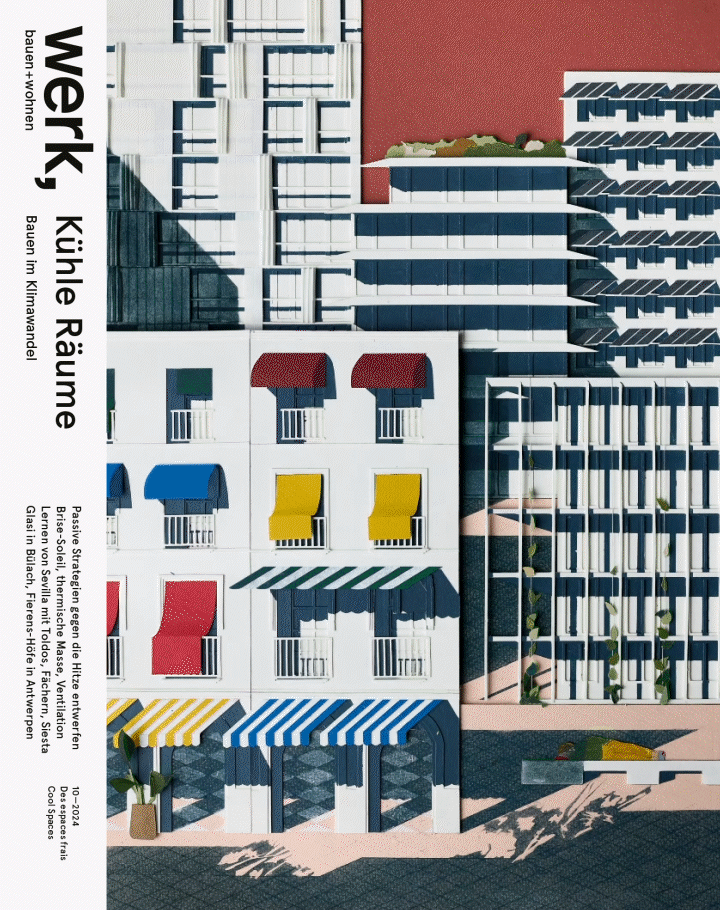werk, bauen + wohnen 10-2024

Dog Days
It is mid-August and the fifth consecutive day with temperatures of over 30 degrees. The ventilator has been humming since the morning, a welcome breeze glides across the skin. Although so far it has been a rainy year this should not deceive us — climate change is indeed happening. With high temperatures people begin to re member recent summers in which heat records tumbled and mobile airconditioning appliances were moved into flats and offices. Often it is not possible to crossventilate, the sun shines mercilessly through large windows. You can not keep a clear head; the body shuts down and tropical nights do not allow real rest.
A few days ago, one could read in the news that the number of deaths caused by heat does not rise in proportion to the increase in temperature. Humans can adapt, they can condition themselves, but can our buildings also do that? Can we build in a way that ensures our well-being in more and more periods of extreme heat and can we do this without using energy devouring air conditioning appliances that
emit even more CO₂ into the atmosphere? Passive air conditioning is the key to cooling in a climatically acceptable way. Lowtech solutions are waiting to be (re)used and developed fur ther. However easy it may sound; the crucial thing is to prevent the heating up of the rooms we live or work in or to delay it and to release the excess heat in the night. Generally, to protect against heat in summer a single method alone is not sufficient. A smart combination of measures along with the architectural use of mass, shade, plants and moving air achieves the desired effect. Simulations of building climatology help to optimise passive strategies.
In this issue we look also at southern Europe where heat of this kind has long been a part of life and culture. Whether it be experiences from “heat city” Seville, or housing design in Barcelona that considers the climate — people in these southern regions have long been dealing with what is now becoming reality in Switzerland: more hot days, more tropical nights, longer periods without rain — and when it does rain, then it pours; like last night, when thunderstorms put an end to the sweltering heat. A brief period of cooling, a gentle sigh of relief — but how long will the dog days continue? And will they soon start as early as May? — Lucia Gratz